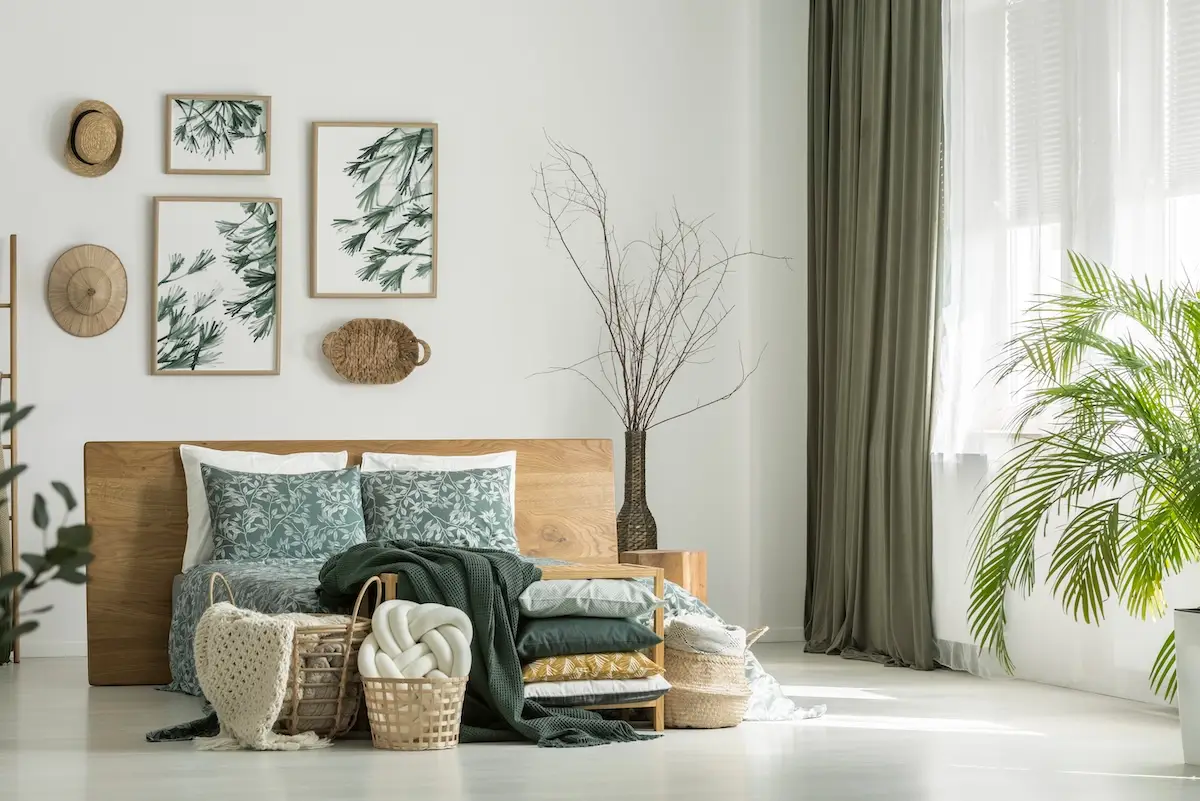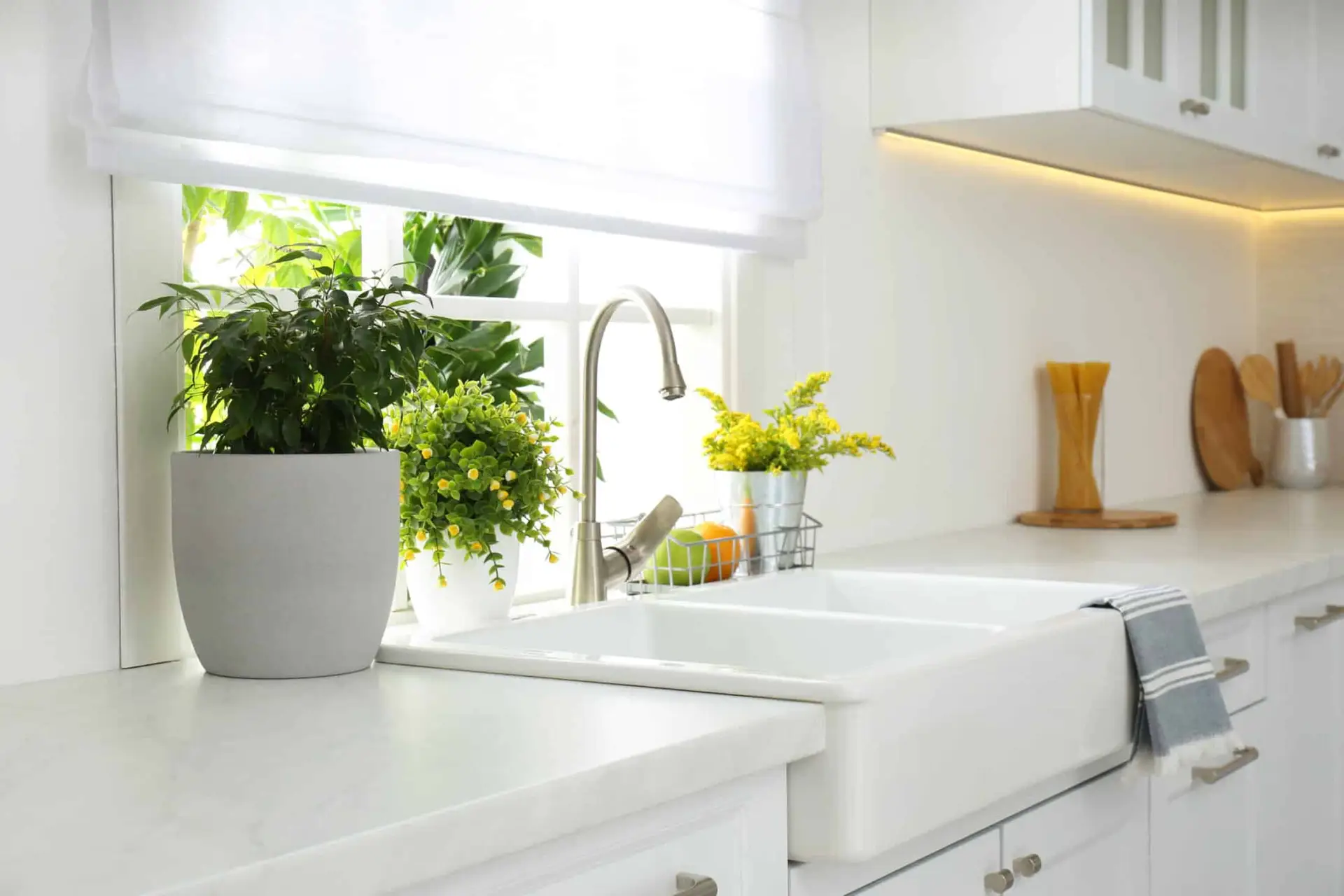When you see the word cottagecore, you may think it is a typo. It’s supposed to be “cottage decor,” right? In a way, yes, but there is more to it, and we mean that literally. Cottagecore is both a design style and a lifestyle that departs from minimalist design in ways that make home life warmer and more fun. And you can do it outdoors as well as indoors. Let’s cozy up and discover the world of cottagecore outdoor decor!
What is Cottagecore?
As the name suggests, cottagecore has its origins in cottage design. It flashed into existence in 2016 and began to fizzle out just as quickly but received a boost during COVID-19 when more focus was placed on a slower pace of living. The trend continues to grow today.
Some trends come on the scene as antidotes to other design trends. In this case, cottagecore offers an alternative to the modern Japandi style. It celebrates old-world cottage enjoyments focusing on domestic activities like cooking, gardening, and needlepoint while evoking the look and feel of a cottage home. And instead of a minimalistic aesthetic, it takes a maximalist approach with the belief that more items in a room will create more interest in your home and your hobbies. This leads to a more cozy environment that feels peaceful and calm while exuding warmth and ambiance.
Cottagecore may sound similar to cottage design or shabby chic, but cottagecore is busier, more casual, playful, colorful, and more focused on supporting and celebrating activities at home.
How to Achieve Cottagecore Design Outdoors
Here are some key traits of cottagecore design for your outdoor spaces:
Color
Cottagecore style is all about clashing materials to bring out each element, but still doing it in a way that works together as a whole. In the world of contrasts, some are negative and some are positive, and this style focuses on the positive. Approaches can range, but the over-arching goal is to avoid having one item stand out more than another while following a complementary color palette. Vibrant, jeweled tones work well, and the same colors are on-trend right now. Use the colors on painted furniture, pillows, cushions, rugs, and umbrellas.
Patterns
Similar to color, patterns are different but still work together. A big focus is on flower patterns, which are picked up on pillows, cushions, rugs, and table settings such as napkins. The busier patterns are, the better. At the same time, the patterns should evoke a traditional cottage feel and vary from one item to the next. Nothing too matchy-matchy.
Timely Furniture Styles
Again, this is not a place for modern styling. Prioritize natural wood in rounded or hand-made aesthetics or highly decorative metal designs such as cafe tables. Dining, coffee, and side tables can feature heavily carved wood, natural burl wood, and reclaimed wood.
In some cases, indoor elements are moving outdoors as well. You can display a buffet next to your dining table. The more rustic the look, the better!
Handmade Touches
Since the style celebrates hobbies like needlepoint, the homes offer a similar aesthetic, showcasing embroidery and beading on your dining table and side tables. The more unique and hand-crafted the look, the better.
Use Surrounding Walls and Surfaces
Decorate to the hilt! Display your tools and homemade creations, such as wood carvings and embroidery.
Natural Centerpieces
Imagine picking your food from your garden and how that would look on your dining table. Cottage design is all about celebrating nature, and this includes your centerpiece. Prioritize showcasing fresh flowers, fruits, and vegetables.
Fun Lighting
You can evoke nature in your lighting as well. One popular choice is using lighting designed to resemble mushrooms. Arrange them to light walkways or strategically place them near tree bases and wood knot holes.
You can also capture the old-world feel of cottage life with strategically placed candles that bring soft light and plenty of ambiance.
Gnomes and Other Statues
Display figures of gnomes or people in ways that celebrate the fun of the outdoors. For instance, set a gnome inside covered bushes, near rocks that work as cozy homes, or inside knots of trees. If you imagine them as Keebler Elves, you are more than halfway there!
Fountains
Fountains pick up on the busy aesthetic of cottagecore while also adding beauty and celebrating nature.
Additional Outdoor Elements
The more cottage-like the exterior is, the better. This includes traits like shutters on windows, cobblestone walls, heavy use of exterior wood and stone, and a large focus on gardening and landscaping.
Versions of Cottagecore Design
Some individual aspects of cottage living can be used as an entire design aesthetic. Examples include “bloomcore” (a focus on flowers) and “honeycore” (a focus on bees). The aesthetic can also shift to fit other cottage themes of varying regions while picking up on their unique hand-made, hobby-based designs. Variations include:
- Beach cottages
- Farm cottages
- Medieval cottages
- Cabin cottages
Creating a Place to Call Home
The trend of cottagecore design began when homes were being used more than ever, and the same benefits continue outdoors today as people continue to spend more time working, playing, and socializing at home. The design adds warmth and comfort that feels ultra-cozy, offering a relaxing alternative for people who find clean, modern design too cold and stark. And it works equally well indoors and outdoors. When it comes to cottagecore outdoor design, the more, the merrier.
Looking to implement cottagecore outdoor decor into your own home? Fill out our inquiry form today!




